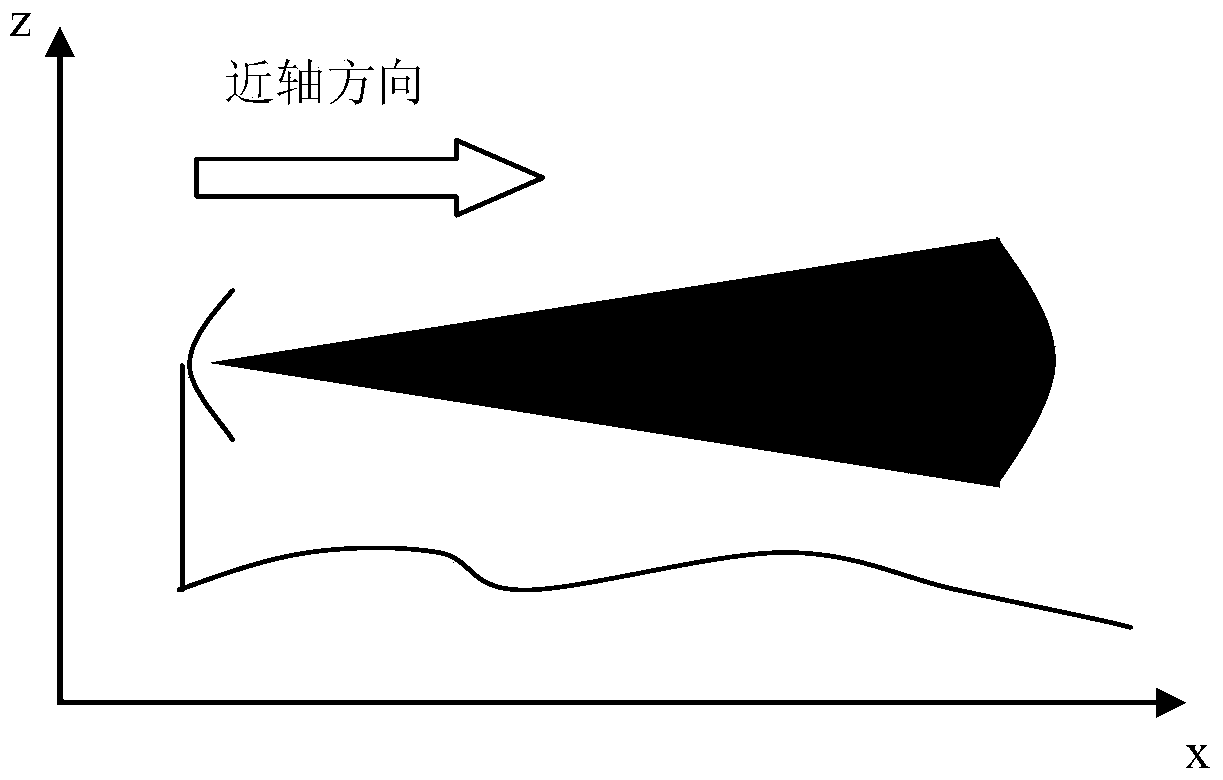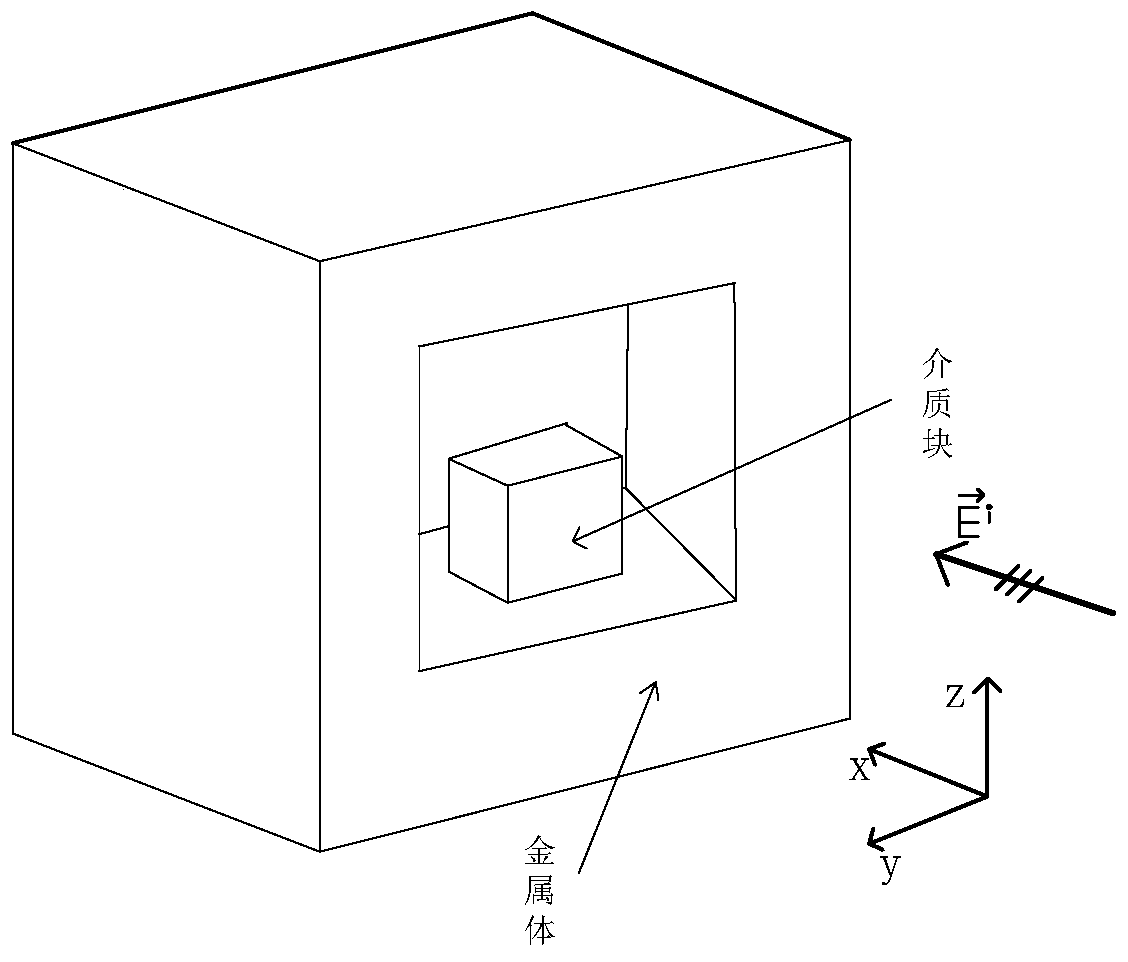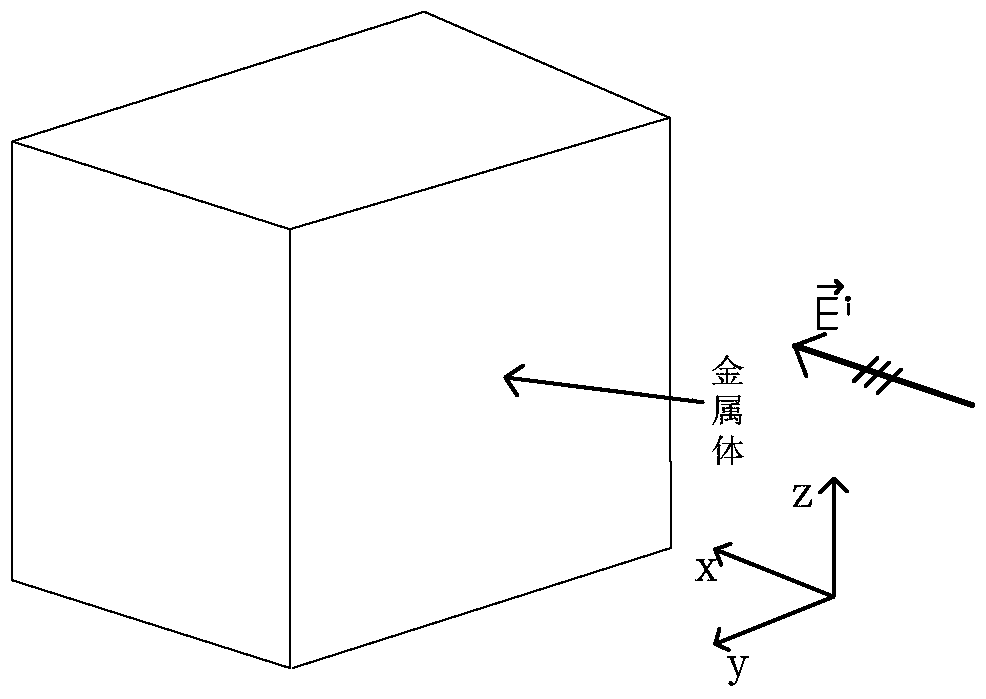Hybrid analysis method of electromagnetic scattering from targets with medium in cavity
An electromagnetic scattering and analysis method technology, applied in the field of numerical calculation of target electromagnetic scattering characteristics, can solve problems such as large calculation errors, unsuitable calculation of cavity or concave surface scattering, large memory, etc., to achieve less memory consumption, fast calculation speed, The effect of small memory consumption
- Summary
- Abstract
- Description
- Claims
- Application Information
AI Technical Summary
Problems solved by technology
Method used
Image
Examples
Embodiment 1
[0098]In this embodiment, a typical simulation of electromagnetic scattering by a medium-containing cavity target is carried out. The simulation is realized on a personal computer with a main frequency of 2.83 GHz and a memory of 3.5 GB. The side length of a metal cube is 6 m, and the side length of the cavity part is a cube of 3 m. As an example, one surface of the film is coated with a medium with a thickness of 0.2m and a relative permittivity of 2.0. Image 6 is its x, z cross-sectional schematic plane, the wave is incident on the opening of the cavity, observe the RCS at the center point of the cavity opening at different frequencies, the direction of the incident wave is θ=0°, The discrete interval in the x-axis direction is 0.1 wavelength. In order to verify the correctness of the method of the present invention, the simulation result of the volume integral equation is used as a reference. Figure 7 It is the comparison result of the RCS value at the backscattering poi...
PUM
 Login to View More
Login to View More Abstract
Description
Claims
Application Information
 Login to View More
Login to View More - Generate Ideas
- Intellectual Property
- Life Sciences
- Materials
- Tech Scout
- Unparalleled Data Quality
- Higher Quality Content
- 60% Fewer Hallucinations
Browse by: Latest US Patents, China's latest patents, Technical Efficacy Thesaurus, Application Domain, Technology Topic, Popular Technical Reports.
© 2025 PatSnap. All rights reserved.Legal|Privacy policy|Modern Slavery Act Transparency Statement|Sitemap|About US| Contact US: help@patsnap.com



